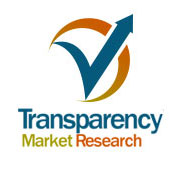Thermal insulation materials are used to restrict the transfer of heat energy between two ends of differing temperature. Heat energy always flows from high temperature end to low temperature end. Heat energy in form of electromagnetic waves flow between objects in a range of radiative influence. Thermal insulation materials provide the insulation in which the radiative heat is reflected or heat conduction is reduced rather than being absorbed. Thermal insulation materials can be segmented on the basis of material type and temperature range of the insulation material. Furthermore, on the basis of material type, thermal insulation materials can be segmented into stone wool, fiberglass, plastic foam, and others. Likewise, on the basis of temperature range, thermal insulation materials can be classified into ranges from -160° C to -50º C, -49º C to 0ºC, 1ºto 100ºC, and 101ºC to 650ºC. Thermal insulation materials find application in various fields such as buildings, spacecraft, mechanical systems, clothing, natural animal insulation, and automotive, etc. Factors affecting the quality of thermal insulation materials include insulation thickness, specific heat capacity, thermal bridging, surface emissivity, density, and thermal conductivity. Globally, thermal insulation materials are used across industries to reduce energy consumption by maintaining the required temperature in the particular area.
Browse the full Research report at : http://www.transparencymarketresearch.com/thermal-insulation-materials-market.html
Thermal insulation materials are employed in the construction industry to maintain temperature in the range of around 1ºC to 100ºC. Factors such as increasing investment in the construction industry, rising number of manufacturing units, and growing urbanization are expected to drive the thermal insulation materials market further during the forecast period. In order to maintain the energy standards, developed countries have formulated strict regulations to reduce their energy consumption. Additionally, developing economies such as India have adopted the Energy Conservation Building Code (ECBC) in a bid to help reduce the energy consumption by 30%-50% with the help of green building materials. Several nations are making efforts to be in line with the zero-energy standards in order to reduce the pollution generated in the production of thermal energy. Increasing concerns about environment are expected to prove to be a key opportunity for the growth of the thermal insulation market during the forecast period. However, high capital cost of thermal insulation materials is projected to act as a hurdle in the growth of the thermal insulation market. Thermal insulation material segmented between the temperature range of 1°C to 100°C is projected to indicate the highest growth till 2023. Residential buildings and commercial offices constituted more than 30% of the energy consumption, out of which approximately half the amount was utilized for the cooling and heating of buildings.
Increase in the use of LNG and other such substances is likely to propel the thermal insulation material market in Asia Pacific during the forecast period. In 2014, Asia Pacific accounted for the maximum share of the global thermal insulation material market. Middle East and Africa stood second in the growth of the thermal insulation materials market due to the storage of cryogenics in the petrochemicals industry. North America experienced a fair growth on account of rise in construction activities in 2014. Europe was estimated to show moderate growth due to increasing environmental norms such as Concerted Action Energy Performance (CAEP) of Buildings during the forecast period. Latin America is projected to demonstrate fair growth due to the presence of developing economies such as Brazil and Mexico during the forecast period.
Some of the key players in the thermal insulation market are Berkshire Hathaway, Inc., Saint Gobain S.A., Asahi Kasei Corporation, Kingspan Group PLC, BASF SE, Owens-Corning, Dow Chemical Company, Bayer AG, Rockwool International A/S, and E. I. du Pont de Nemours and Company.
Get free PDF Brochure of Thermal insulation materials : http://www.transparencymarketresearch.com/sample/sample.php?flag=B&rep_id=11063
The report has been compiled through extensive primary research (through interviews, surveys, and observations of seasoned analysts) and secondary research (which entails reputable paid sources, trade journals, and industry body databases). The report also features a complete qualitative and quantitative assessment by analyzing data gathered from industry analysts and market participants across key points in the industry’s value chain.
A separate analysis of prevailing trends in the parent market, macro- and micro-economic indicators, and regulations and mandates is included under the purview of the study. By doing so, the report projects the attractiveness of each major segment over the forecast period.
Transparency Market Research (TMR) is a market intelligence company, providing global business information reports and services. Our exclusive blend of quantitative forecasting and trends analysis provides forward-looking insight for thousands of decision makers. TMR’s experienced team of Analysts, Researchers, and Consultants, use proprietary data sources and various tools and techniques to gather and analyze information.
Our data repository is continuously updated and revised by a team of research experts, so that it always reflects the latest trends and information. With a broad research and analysis capability, Transparency Market Research employs rigorous primary and secondary research techniques in developing distinctive data sets and research material for business reports.

